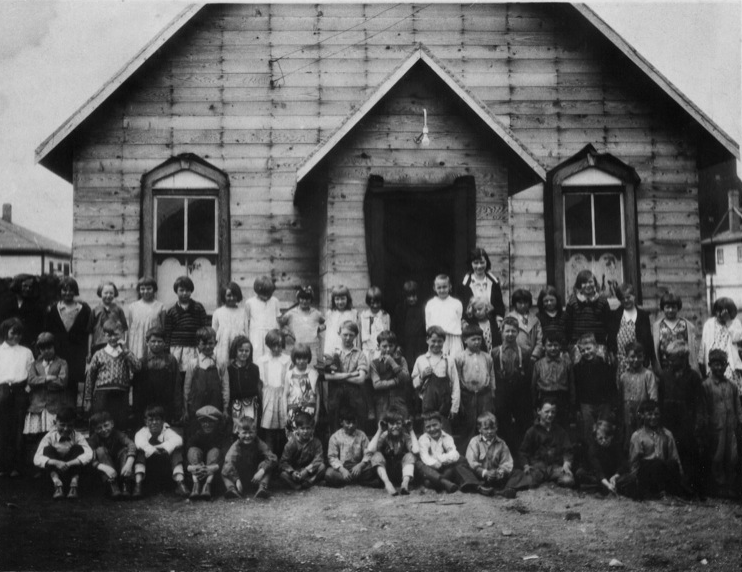There is no denying the importance of education. For most prairie communities, this came in the form of one room school houses that often existed long before the communities around the did. People would organize, build and educate.
In early Flin Flon, there may have only been a mining camp, but the need to educate children was still apparent to many there. This is why on August 9, 1929, a group of citizens came together to talk about forming a school. The objective of the group was to contact the provincial authority and request a visit to the community for the purpose of explaining the need for a school with a growing number of children living in the mining camp.
While no school was organized quite yet, work was already being done to provide schooling. A classroom was set up in the United Church and Laura Robson came in as the first teacher in the community’s history. Very quickly, the classroom had 12 students and, within a month, another classroom had to be arranged. This classroom was down the street at the Catholic Church, with Geraldine Thompson, the wife of the local dentist, teaching this classroom of students.
In 1930, a visit from Dr. Elliott finally happened and he saw the need for a school in the community. Thus began the drive to get a school built. The school board began raising funds through public subscriptions, box socials, raffles and dances. The government provided a grant to the board in February 1931 and while there was no new school that year, there were nine classrooms set up around the community with 240 students enrolled. These classrooms were in churches, a room at the staff house of the Hudson Bay Mining and Smelting Company (HBM&S) - even two classrooms in Plummer’s Pool Hall, divided by a thin partition. Most of these classrooms had no desks, blackboards or any proper supplies. Often students would show up with their pets, which had to be cleared out of the classroom.
HBM&S saw the need to help with education and they pledged to make payroll deductions of 50 cents per man to secure money to cover the expenses in connection with schooling. In addition, children who lived outside the temporary townsite were allowed to come in to get an education. Unfortunately, there would be no high school classes as there was a lack of accommodation for those students.
In the latter half of 1931, with classrooms bursting at the seams, the school board received a letter from the government stating there would be no more taxes collected until the town was incorporated. A strong letter was then sent to Premier John Bracken to make the case for the schools and their need of this money. This helped because on Oct. 15, the board began to discuss plans for an eight-room school and it was decided that since the school would be financed by taxes, payroll deductions would no longer happen.
In June 1932, a loan was granted for the construction of a school building. Construction began in April 1932, with the school building being located near the Roman Catholic Church. The proposed cost of the school was $24,000, with labour and materials bringing up the cost heavily. To help, HBM&S provided 9,000 feet of lumber for scaffolding, as well as cement mixers, carpentry tools and more. They also had two of their own supervisors help watch over the project and provide engineering help.
The school would open on Sept. 1, 1932, ending the era of classrooms scattered around the town and beginning a new era of schooling for the community. That first year, 400 students would enrol.
Have a question or idea? E-mail Craig at [email protected] You can read hundreds of articles on Canadian history at http://canadaehx.blogspot.ca. Find him on Twitter at @craigbaird.
Search for “Canadian History Ehx” on all podcast platforms to listen to Craig’s history podcast.
Information for this article comes fromFlin Flon.




